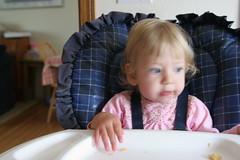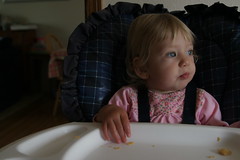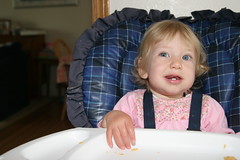Slow Sync Flash
Slow sync flash is an approach to flash photography that's somewhat counter-intuitive.
The whole reason that most people activate their flash units is because there isn't enough ambient light for the camera to capture a good exposure of the subject.
Since you don't want your photo appearing completely under exposed, the solution is to add some light to the scene with an electronic flash.
Activating the flash will also ensure that you can use a moderately fast shutter speed setting in order to freeze the motion of your subject.
But with slow sync flash you intentionally use a SLOW shutter speed in conjunction with the flash in order to add some motion blur to your flash photos.
Shutter Speed and Motion Blur
A shutter is a curtain that sits in front of your camera's sensor and blocks out all the light. When you press the button to take a photo, the shutter opens for a very brief period of time: this is called the shutter speed.
Shutter speeds are typically measured in fractions of a second (although you can use shutter speeds longer than a second) and there's a common scale for them (with the numerator removed):
| 4000 | 2000 | 1000 | 500 | 250 | 125 | 60 | 30 | 15 | 8 | 4 | 2 | 1 |
In this case, 4000 is really 1/4000th of a second.
There's a direct relationship between shutter speed and the clarity of the subject in your photos:
Fast shutter speeds freeze motion / Slow shutter speeds blur motion
When taking photos of fast-moving subjects (planes, cars, running horses, etc.) you need to use very fast shutter speeds to ensure that the subject appears completely sharp in the photo.
If the shutter speed isn't quite fast enough, your subject will appear blurry (but the background will be clear).
For static subjects motion blur is less of a problem, unless the shutter speed becomes too slow. Once shutter speed slows down enough, then you're running the risk that the entire photo will turn out blurry.
The problem here is a simple one: camera motion. If you're holding the camera in your hands, the entire camera is moving around ever so slightly.
The slight motion of the camera is only apparent in your photos when shutter speeds drop below 1/30th of a second (without image stabilization) and about 1/8th of a second with stabilization.
Low Light Photography
As the light gets dimmer and dimmer, your shutter needs to stay open for longer periods of time in order to capture a good exposure (so that the photo doesn't appear too dark).
Some examples:
| AVAILABLE LIGHT | SHUTTER SPEED (SEC) |
| Outdoor overcast daylight | 1/250 |
| Indoor daylight | 1/60 |
| Indoor night with lights | 1/15 |
| Outdoor night | 20 |
When your camera is set to AUTO mode, it checks the shutter speed - if the camera feels that the shutter speed isn't adequate to capture a clear photo, it will automatically pop up the flash to add more light to the scene.
For example, let's say that the right shutter speed for an indoor photo is 1/10th of a second. Even if you have an image stabilization system to eliminate camera blur, if your subject doesn't stay perfectly still you'll still get a blurry photo.
The only solution here is to add some more light. Once the flash has been activated, you'll be able to use a shutter speed of 1/60th of a second, which increases the likelyhood of a nice sharp image.
While blasting your subject with flash lets you use a nice fast shutter speed, it can have a negative effect on the background behind your subject.
Dark Backgrounds
Let's talk about what happens when you use your flash to light up a subject that's right in front of the camera.
So what do you do if you want BOTH the subject AND the background to show up when you're taking photos with flash?
Slow Sync Flash
This has been a somewhat roundabout way to introduce slow sync flash, but it helps clarify why slow synch flash is useful.
Simply put:
Slow synch flash is the use of a slow shutter speed in conjunction with a burst of light from flash.
The main purpose is often to brighten the background behind a stationary subject illuminated by the flash.
Let's go back to the image sequence from the previous section. The last image used a faster shutter speed (1/60th of a second) in conjunction with a flash which resulted in a very dark background.
Now, we're going to set the camera to a slow shutter speed (as if the flash was turned off) but will still use the flash to illuminate the subject.
Another use of slow sync flash is to create a visual effect that is simply not possible by any other means.
When you use slow sync flash with subjects in MOTION, you still get image blur just as you would using a slow shutter speed with a moving subject, but you also are able to capture a clear non-blurry image when the flash goes off.
The combination of sharp detail with motion blur can create some very interesting photographic opportunities, so long as you're willing to experiment to get just the right look.
So when might you use this slow sync flash technique?
- For portraits where the flash is required but you'd still like some detail in the background (subject is outside at night or early evening)
- For dynamic motion shots where you don't want the entire image to appear blurry (people dancing, cars passing by, etc.)
These are just a few examples. Once you get the hang of using slow sync flash, you'll find plenty of opportunities to leverage it to capture more dynamic photos.
| Digital SLR Home | External Flash |

|








